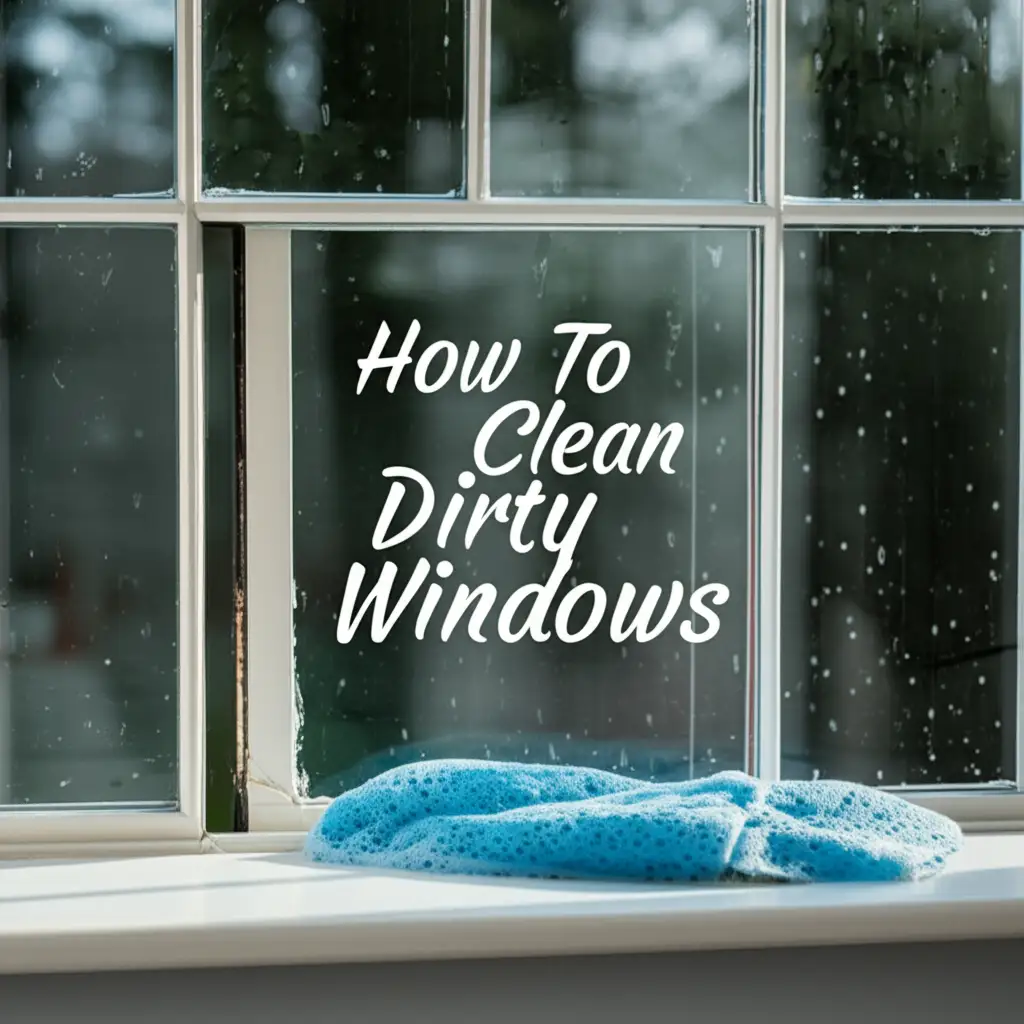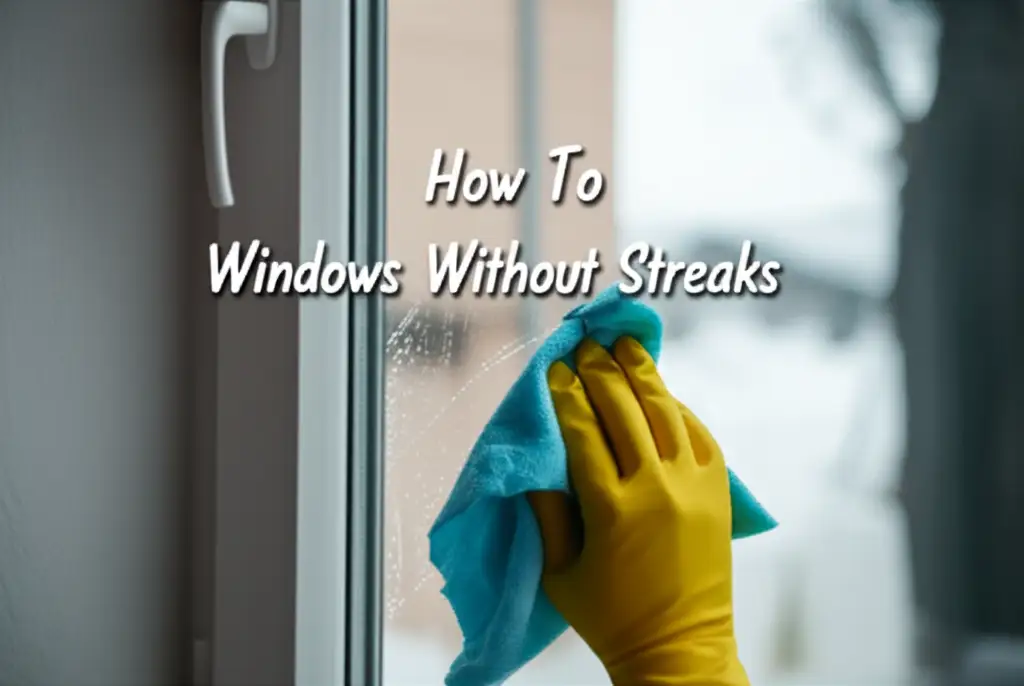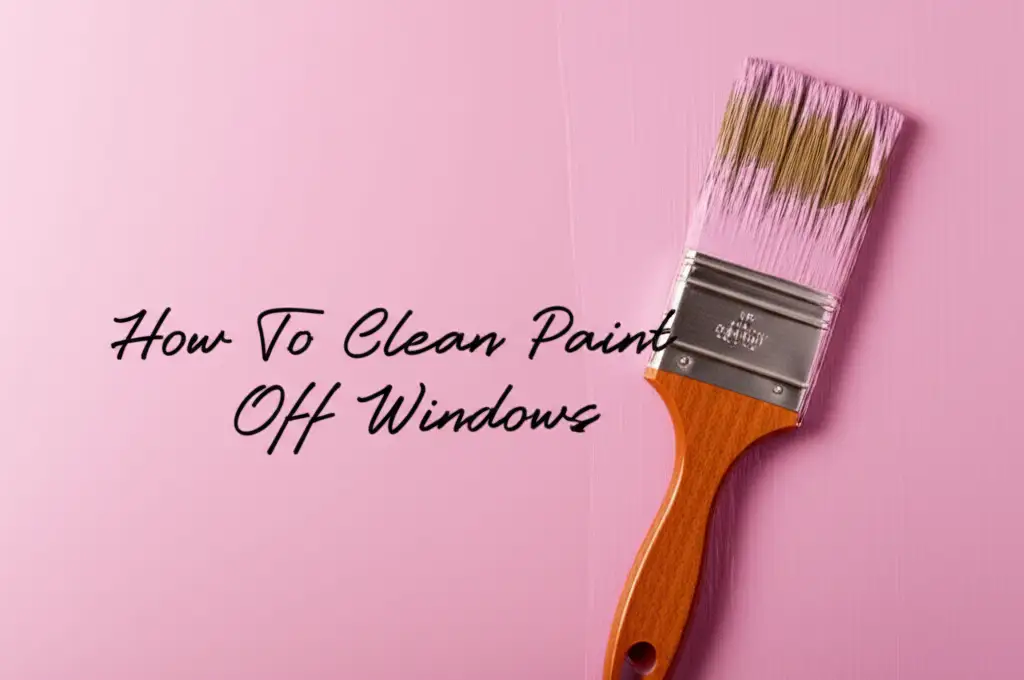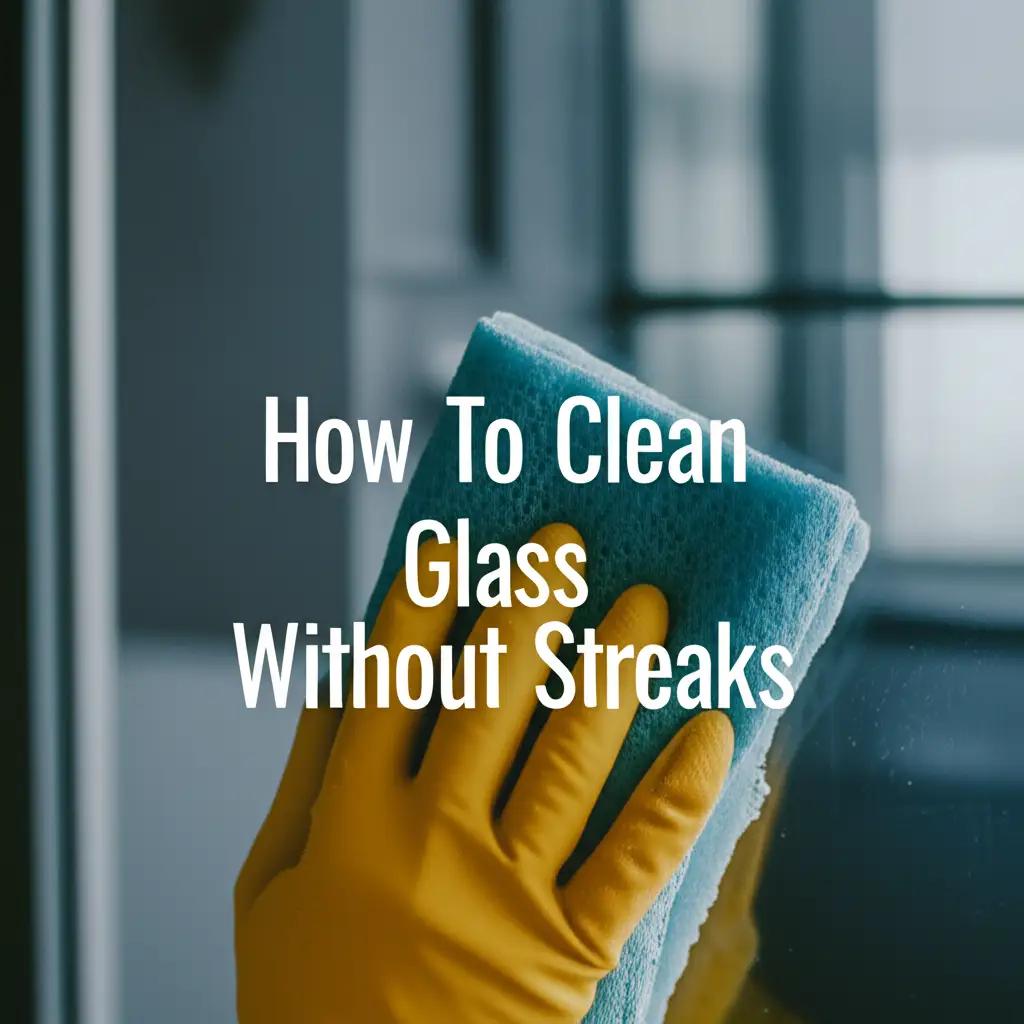· Home Cleaning · 10 min read
How To Clean Dirty Windows

Make Your Dirty Windows Sparkle Again
Do your windows look cloudy and spotted? Cleaning dirty windows makes a big difference in how bright and inviting your home feels. Smudged glass blocks sunlight and hides your view. I know the feeling of looking through grimy panes. It just does not feel clean.
This guide will show you simple ways to get your windows sparkling. We will cover choosing the right tools and making effective cleaning solutions. You will also learn techniques to avoid streaks and keep your windows cleaner longer. By the end, you will know exactly how to clean dirty windows like a pro.
Takeaway
- Gather Tools: Collect squeegee, microfiber cloths, buckets, and a sturdy ladder.
- Prepare Solution: Mix warm water with dish soap or white vinegar for a natural cleaner.
- Pre-Clean: Remove loose dirt and debris before washing glass surfaces.
- Wash Methodically: Work from top to bottom, overlapping strokes for streak-free results.
- Dry Properly: Use a clean squeegee or dry microfiber cloths for best shine.
To clean dirty windows, first remove loose debris. Then, use a mix of warm water and a small amount of dish soap or white vinegar. Apply the solution with a clean sponge or cloth. Use a squeegee for streak-free drying, wiping the blade after each pass. Finish edges with a dry microfiber cloth.
Essential Tools for Cleaning Dirty Windows
Having the correct tools makes cleaning dirty windows much easier. You do not need many items, but the right ones make a big difference. Think about what will help you reach high spots and what will give you the best shine. I always start by gathering everything before I begin.
First, you need two buckets. One holds your cleaning solution, the other clean rinse water. A good quality squeegee is key for streak-free results. Choose one with a comfortable handle and a sharp rubber blade. Microfiber cloths are also very helpful. They pick up dirt well and do not leave lint behind.
For tough jobs, a scrubbing brush or a non-abrasive sponge helps loosen stuck-on grime. If your windows are high, a sturdy step ladder or an extension pole for your squeegee is necessary. Safety always comes first when working at heights. Finally, a small utility knife or razor blade can carefully remove paint or stubborn spots from glass, but use it with extreme care to avoid scratching the surface.
Preparing Your Cleaning Solution and Pre-Cleaning Steps
Making the right cleaning solution is a simple step, but it is important for how well your windows turn out. You can use common household items for an effective cleaner. This saves money and avoids harsh chemicals. I find a simple homemade mix works best for most dirty windows.
Start with warm water in one of your buckets. Warm water helps dissolve dirt and grime more easily. Add a few drops of dish soap to the warm water. Dish soap cuts through grease and dirt effectively. You can also use white vinegar for a natural, streak-free option. Mix equal parts white vinegar and water in your bucket. For extra cleaning power, add a splash of rubbing alcohol or cornstarch to the vinegar solution.
Before you apply any liquid, you must pre-clean your windows. Use a soft brush or a vacuum cleaner with a brush attachment to remove loose dirt, dust, and spiderwebs. This step prevents turning dry dirt into muddy streaks when you start washing. I always make sure to wipe down the window frames too. Removing large debris now saves you time later.
Step-by-Step Guide: How to Wash Dirty Windows
Washing your windows correctly ensures a clean, streak-free finish. This process works for most window types. Following these steps helps you get the best results every time. I always follow this order for maximum shine.
First, dip your washing tool—a sponge or a window scrubber—into your cleaning solution. Apply the solution generously to the entire window surface. Make sure to cover the glass from top to bottom. Pay extra attention to corners and edges where dirt often collects. Let the solution sit for a minute or two on very dirty areas to loosen grime.
Next, it is time to use your squeegee. Start at the top corner of the window. Press the squeegee blade firmly against the glass. Pull it down in a straight, overlapping stroke. Overlap each stroke by about an inch to prevent missed spots. Wipe the squeegee blade with a clean, dry cloth after each pass. This removes dirt and prevents streaks. For many people, achieving streak-free results is a common goal when cleaning windows. You can learn more about how to clean windows without streaks for detailed tips.
Work your way across the window, making parallel passes. When you reach the bottom, use a clean, dry microfiber cloth to wipe away any excess water from the edges and sill. For very stubborn spots, like dried paint or hard water stains, you may need a specialized approach. You can find specific methods for tough spots, such as how to clean paint off windows or how to clean hard water off windows, if these issues apply to your windows. This method leaves your glass crystal clear.
Tackling Specific Types of Dirty Windows and Tough Stains
Sometimes, “dirty” means more than just dust and grime. Windows can have stubborn stains like hard water spots, paint splatters, or even sticky residue. These require special attention beyond a general wash. Knowing how to handle these makes a big difference. I have dealt with many types of window challenges.
Hard water spots are common, especially in areas with mineral-rich water. These appear as cloudy, white spots that do not easily wipe away. For these, a solution of white vinegar or lemon juice often helps. Apply it directly to the spots. Let it sit for several minutes to dissolve the minerals. Then scrub gently with a non-abrasive pad. You can find more specific advice on how to clean hard water off windows for these persistent issues.
Paint splatters or caulk residue can be very tricky. Do not try to scratch them off with your fingernail. A razor blade scraper, held at a shallow angle, works best. Carefully slide it under the dried paint to lift it from the glass. Always be gentle to avoid scratching the window. If you are facing this problem, detailed instructions on how to clean paint off windows are available.
For sticky residue from stickers or tape, rubbing alcohol or a citrus-based cleaner usually works well. Apply it to the residue. Let it soak for a moment. Then wipe it away with a cloth. For unique window types, such as windows that tilt in, special cleaning methods apply. Learn how to clean tilt-in windows for specific instructions on these features. Remember, different stains need different solutions.
Cleaning Exterior and Interior Dirty Windows
Cleaning both the inside and outside of your windows is important for true clarity. Each side presents unique challenges. The exterior faces weather and outdoor elements. The interior collects dust and fingerprints. I often clean one side first, then the other, to easily spot any missed streaks.
When cleaning exterior windows, you might find more tough dirt. Pollen, bird droppings, and caked-on mud are common. Start by rinsing the outside of the windows with a hose to remove loose debris. This prevents scratching the glass later. Then, apply your cleaning solution generously. For very high exterior windows, especially if they are difficult to reach, you might want to look into how to clean outside windows from inside to save time and ensure safety.
For interior windows, dust and greasy smudges are the main culprits. Fingerprints and cooking oils can leave a film. Use a lighter touch with your cleaning solution on the inside. You usually do not need as much pre-rinsing. Make sure to protect your floors and furniture below the windows from drips. Lay down old towels or newspapers.
When squeegeeing, it can be helpful to wipe vertically on one side (e.g., outside) and horizontally on the other (e.g., inside). This way, if you see a streak, you immediately know which side it is on. Double-hung windows, common in many homes, have specific design features that impact cleaning. For advice tailored to these common window types, you can consult a guide on how to clean double-hung windows. This simple trick helps you achieve truly streak-free results.
Maintaining Clean Windows Longer
After all your hard work cleaning dirty windows, you want them to stay clean. Good maintenance habits reduce how often you need to do a full wash. Small steps can make a big difference in the long run. I try to incorporate these into my regular cleaning routine.
First, regular dusting helps a lot. Dust accumulates on window sills and frames. This dust can easily transfer to the glass. Wipe down these areas with a dry cloth or a duster weekly. This stops dust from building up and making your windows dirty again.
Consider using a window sealant or rain repellent product. These products create a slick surface on the glass. Water beads up and rolls off, carrying dirt with it. This reduces water spots and makes future cleaning easier. Apply these products after a thorough cleaning for best results. Always follow the product instructions carefully.
Finally, address issues like screens or nearby foliage. Dirty screens can transfer grime to newly cleaned glass every time you open or close the window. Clean your screens periodically. Trim back bushes or trees that brush against windows. This friction can leave marks and debris. Simple preventative measures keep your windows brighter, longer.
FAQ Section
How often should I clean my dirty windows? Clean your windows at least twice a year, typically in spring and fall. If you live in a dusty area, near construction, or have pets, you might need to clean them more often. Regular cleaning prevents dirt from building up and becoming harder to remove. This schedule keeps them looking good.
Can I use newspaper to clean windows? Yes, you can use newspaper. Newspaper can absorb liquid well and does not leave lint behind. However, some newspaper ink can transfer to window frames or hands. Microfiber cloths or a squeegee are often preferred for modern, streak-free cleaning. Test newspaper on a small area first.
What is the best time of day to clean windows? Clean windows on a cloudy or overcast day. Direct sunlight can dry the cleaning solution too quickly. This leaves streaks on the glass. Cleaning in cooler temperatures also helps the solution stay wet longer. Choose a calm day with little wind for best results.
How do I prevent streaks when cleaning windows? To prevent streaks, use a clean squeegee with a sharp blade. Wipe the blade after each stroke. Do not use too much soap in your solution. Finish edges with a clean, dry microfiber cloth. Avoid cleaning in direct sunlight. These steps help ensure a clear, streak-free shine.
What if my windows have really tough, caked-on dirt? For very tough dirt, pre-soak the windows with your cleaning solution for longer, perhaps 5-10 minutes. Use a non-abrasive scrubbing pad or a soft brush to gently loosen the grime. A razor blade scraper can remove dried paint or hardened sap, but use it with extreme care to avoid scratching the glass. You might need to repeat the process.
Is it safe to power wash windows? Generally, it is not recommended to power wash windows. High pressure can damage window seals, screens, and frames. It can also force water into the house. For general cleaning, a garden hose rinse is sufficient. Use specialized window cleaning tools for more intense cleaning.
Conclusion
Cleaning dirty windows transforms your living space, letting more light in and brightening your view. We covered everything from gathering the right tools to mixing effective cleaning solutions. You learned step-by-step how to wash windows for a streak-free shine. We also discussed how to handle tough stains and keep your windows cleaner longer.
Remember, a clean window is a happy window. Regular maintenance is key to keeping them looking their best. Do not let grime build up. Take these tips and apply them to your home today. Get started and enjoy the clear, bright views. Your home will thank you for it.
- window cleaning
- streak-free windows
- dirty windows
- window care tips
- glass cleaning




